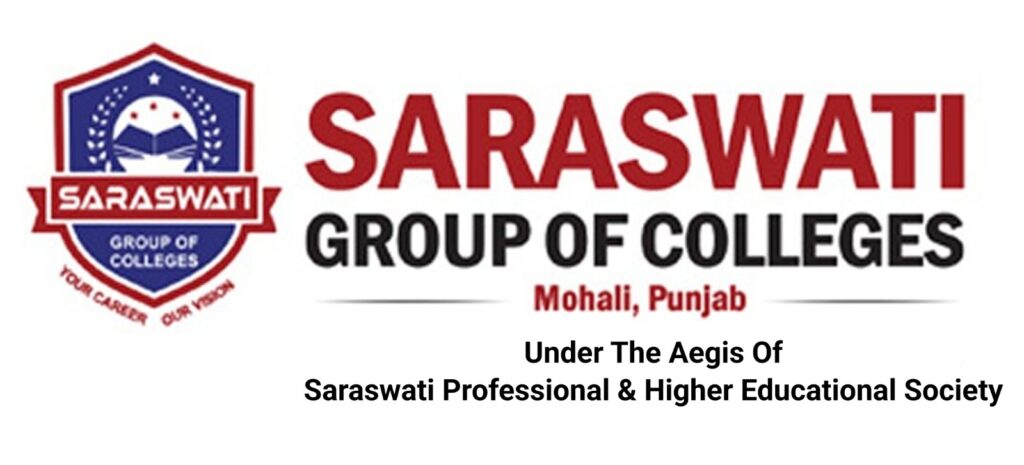SGC Gharuan: Nursing College, Ayurveda College, Pharmacy College
The Double-Edged Sword: Social Media’s Impact on the Classroom

Social media has become an integral part of modern life, influencing various aspects of society, including education. The rise of platforms such as Facebook, Twitter, Instagram, and LinkedIn has transformed how students and educators interact, share information, and learn. This article delves into the impact of social media on the classroom, examining its benefits, challenges, and the ways it is reshaping the educational landscape.
Introduction
The Rise of Social Media in Education
Social media’s introduction has completely changed how people communicate and share information. In the context of education, it has opened up new avenues for collaboration, learning, and engagement, making it a significant tool in the modern classroom.
Purpose of the Article
This article aims to explore the various impacts of social media on the classroom, highlighting both its positive and negative effects, and providing insights into how educators can effectively integrate these platforms into their teaching strategies.
Benefits of Social Media in the Classroom
Enhanced Communication and Collaboration
Social media platforms facilitate instant communication and collaboration among students and between students and teachers. They enable group projects, discussions, and real-time feedback, fostering a collaborative learning environment.
Example: Platforms like Slack and Microsoft Teams allow students to work together on projects, share resources, and communicate with ease.
Access to Resources and Information
Social media provides access to a vast array of educational resources, including articles, videos, tutorials, and expert opinions. Students can easily find information on any topic, enhancing their learning experience.
Example: YouTube offers countless educational channels that provide tutorials and lectures on various subjects, supplementing traditional classroom learning.
Engagement and Motivation
The interactive nature of social media can increase student engagement and motivation. Interactive content, such as quizzes, polls, and discussions, can make learning more enjoyable and stimulating.
Example: Twitter chats on specific educational topics can engage students in meaningful conversations and expose them to different perspectives.
Development of Digital Literacy
Integrating social media into the classroom helps students develop essential digital literacy skills. These skills are crucial in today’s digital world and include online etiquette, information evaluation, and digital communication.
Example: Assignments that require students to create blog posts or social media content can teach them how to communicate effectively online.
Challenges of Social Media in the Classroom
Distraction and Time Management
One of the main challenges of social media in the classroom is the potential for distraction. Students may be tempted to check their social media accounts during class, leading to decreased focus and productivity.
Solution: Establishing clear guidelines and using classroom management tools can help minimize distractions.
Cyberbullying and Privacy Concerns
Social media can also expose students to cyberbullying and privacy issues. Negative interactions online can affect students’ mental health and well-being.
Solution: Educators should promote a positive online culture, teach students about digital citizenship, and implement policies to protect students’ privacy.
Reliability of Information
The abundance of information on social media can be overwhelming, and not all of it is reliable. Students need to learn how to critically evaluate sources and distinguish between credible and non-credible information.
Solution: Incorporating lessons on media literacy and critical thinking can help students develop these skills.
Integrating Social Media into Teaching Strategies
Creating a Social Media Policy
Developing a clear social media policy is essential for setting expectations and guidelines for using these platforms in the classroom. This policy should address acceptable use, privacy, and consequences for misuse.
Example: A social media policy might include rules about appropriate behavior, the types of content that can be shared, and how to report inappropriate behavior.
Using Social Media for Professional Development
Educators can use social media for their own professional development. Platforms like Twitter and LinkedIn offer opportunities for networking, sharing resources, and participating in professional learning communities.
Example: Following educational hashtags on Twitter can help teachers stay updated on the latest trends and best practices in education.
Enhancing Student Engagement
Teachers can use social media to enhance student engagement by incorporating interactive elements into their lessons. This might include using platforms for classroom discussions, sharing multimedia content, and encouraging students to create and share their own content.
Example: Using Instagram for a visual storytelling project where students create posts related to their coursework.
Promoting Collaborative Learning
Social media can facilitate collaborative learning by allowing students to work together on projects and share ideas outside the classroom. Tools like Google Drive and collaborative boards can enhance this process.
Example: A class could use a private Facebook group to discuss assignments, share resources, and provide peer feedback.
Case Studies and Examples
Case Study: Twitter in the Classroom
One high school teacher used Twitter to create a class hashtag for discussions and Q&A sessions. This approach allowed students to engage with course material in a new way, fostering a sense of community and increasing participation.
Impact: Students reported feeling more connected to their classmates and more engaged in their learning.
Case Study: Facebook for Group Projects
A university professor used a private Facebook group to manage group projects. Students could post updates, share files, and communicate with their group members, which streamlined the project management process.
Impact: Students found it easier to collaborate and stay organized, leading to better project outcomes.
Example: YouTube for Flipped Classroom
Many educators use YouTube to implement a flipped classroom model. They create and upload lecture videos for students to watch at home, freeing up class time for hands-on activities and discussions.
Impact: This approach allows for more interactive and personalized learning experiences.
Future of Social Media in Education
Emerging Trends
As technology continues to evolve, new trends are emerging in the use of social media in education. Virtual reality (VR), augmented reality (AR), and artificial intelligence (AI) are expected to play significant roles in the future of social media and education.
Example: VR platforms like AltspaceVR can create immersive learning environments where students can interact with each other and the content in new ways.
Personalized Learning
Social media platforms can facilitate personalized learning by allowing educators to tailor content and interactions to individual student needs. Adaptive learning technologies can provide customized learning experiences based on student performance and preferences.
Example: AI-powered tools can analyze student data to recommend personalized learning paths and resources.
FAQs
How can teachers manage social media distractions in the classroom?
Teachers can manage distractions by setting clear guidelines, using classroom management tools, and incorporating social media into lessons in a structured way.
What are some best practices for using social media in education?
Best practices include creating a social media policy, promoting digital citizenship, using social media for professional development, and leveraging platforms for collaborative learning and student engagement.
How can social media enhance student engagement?
Social media can enhance engagement by providing interactive and multimedia content, facilitating real-time communication, and allowing students to create and share their own content.
What role does social media play in personalized learning?
Social media can support personalized learning by offering tailored content, adaptive learning technologies, and opportunities for students to explore their interests at their own pace.
How can educators ensure the reliability of information on social media?
Educators can teach students media literacy skills, emphasize the importance of credible sources, and incorporate lessons on evaluating information critically.
Conclusion
Summary of Key Points
The integration of social media into the classroom offers numerous benefits, including enhanced communication, access to resources, increased engagement, and the development of digital literacy. However, it also presents challenges such as distractions, cyberbullying, and the need for critical evaluation of information.
Final Thoughts
By understanding and addressing these challenges, educators can harness the power of social media to create more dynamic, interactive, and effective learning environments. As technology continues to advance, the role of social media in education will likely expand, offering even more opportunities for innovation and improvement in teaching and learning.

















No Comments yet!